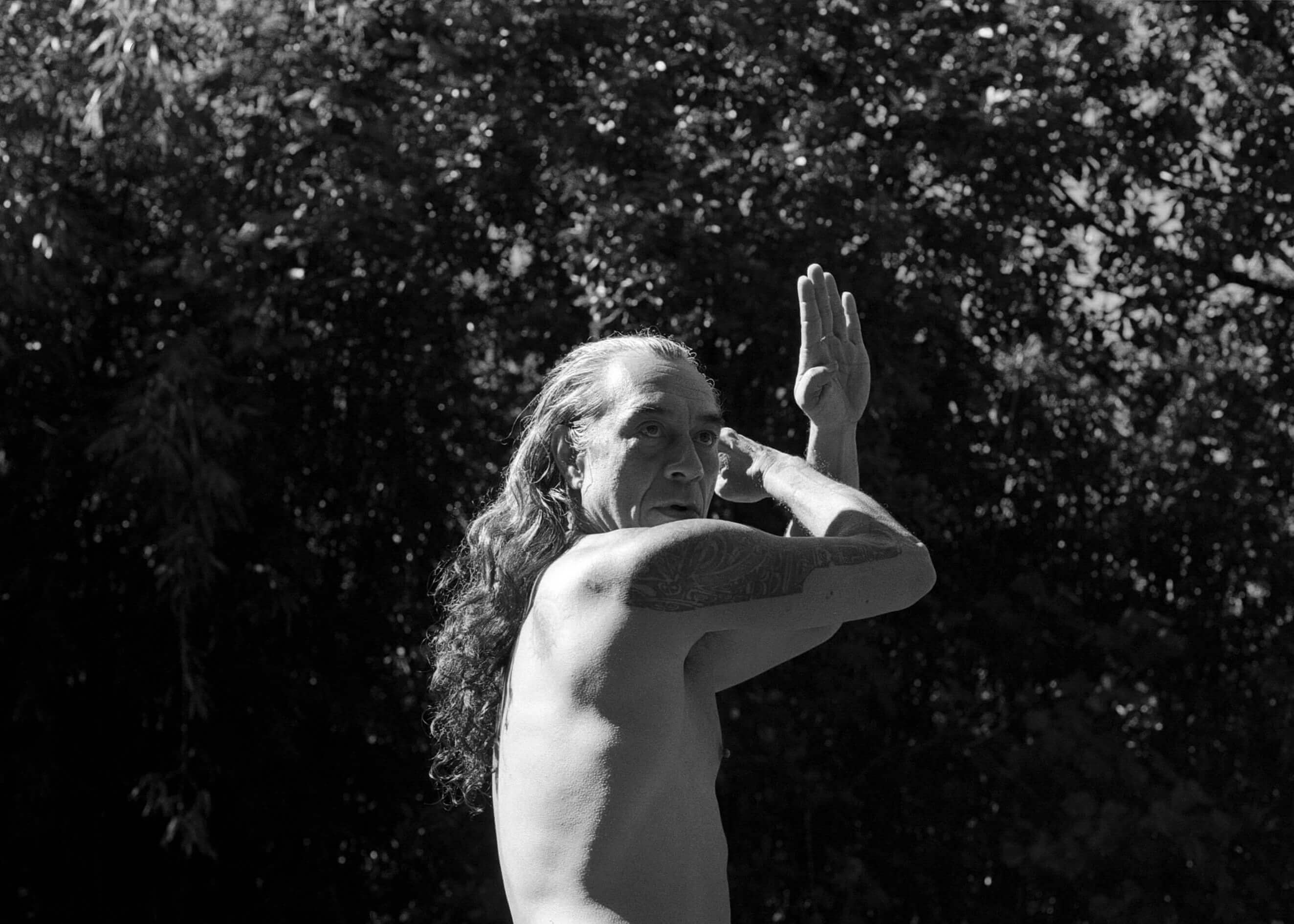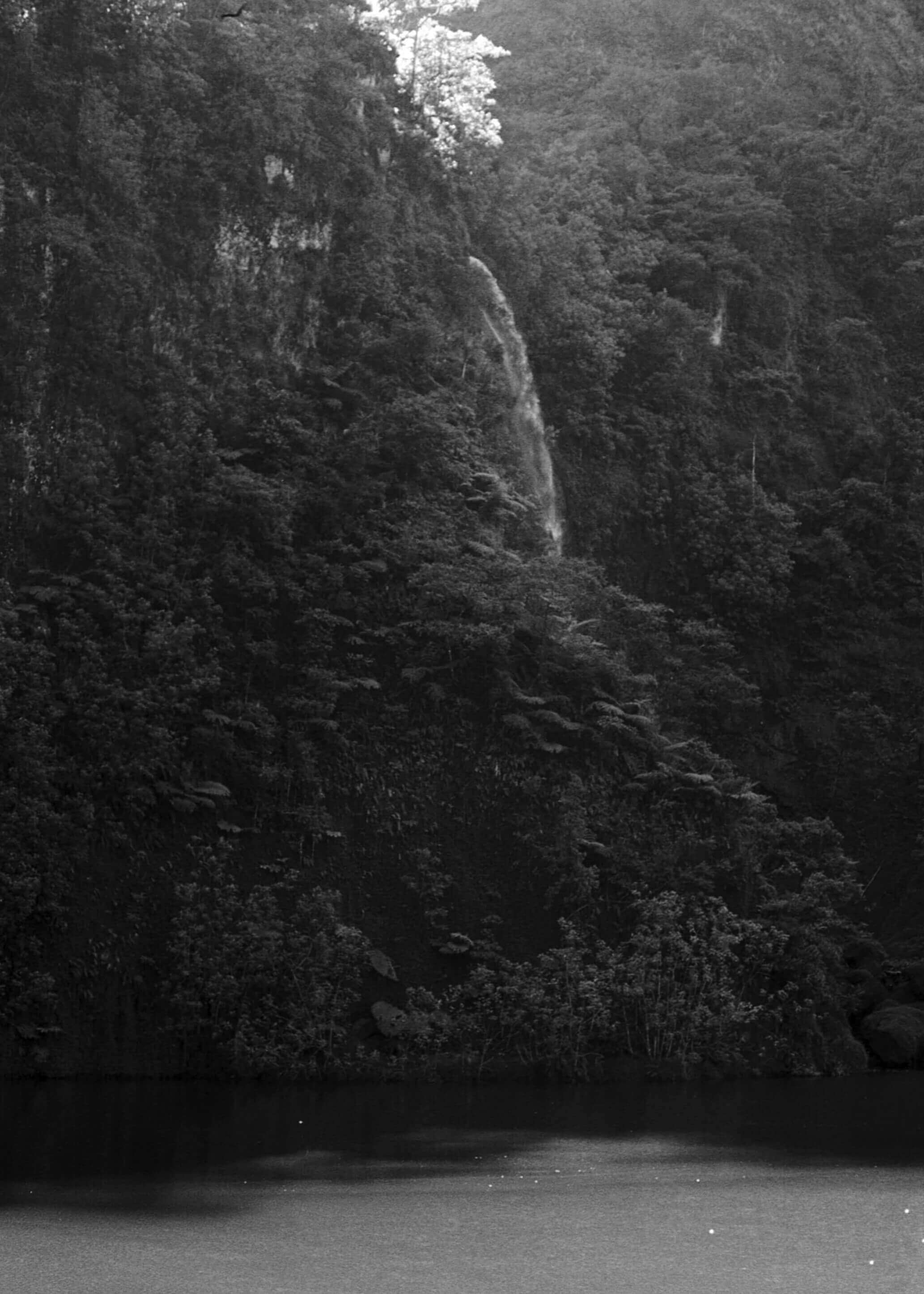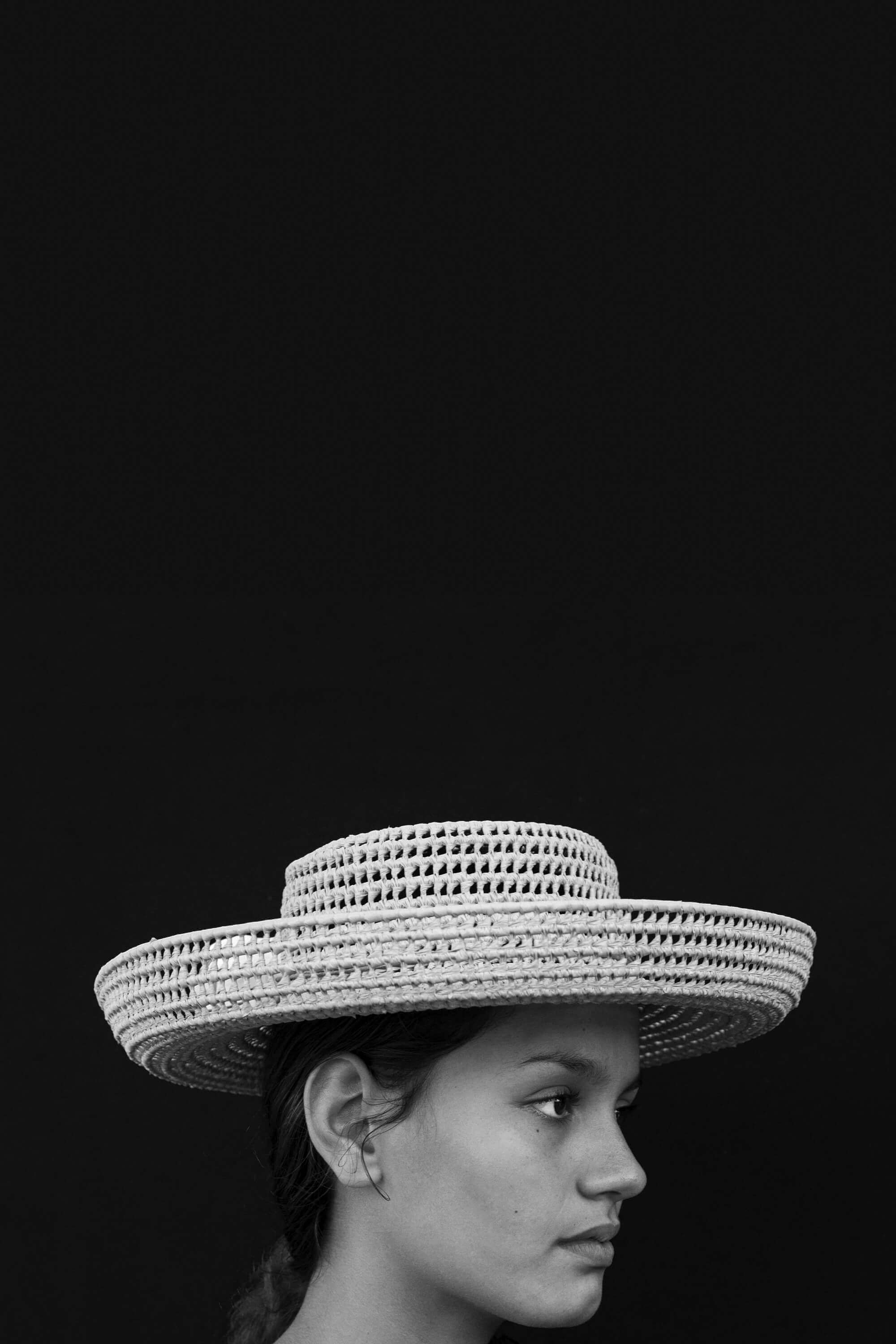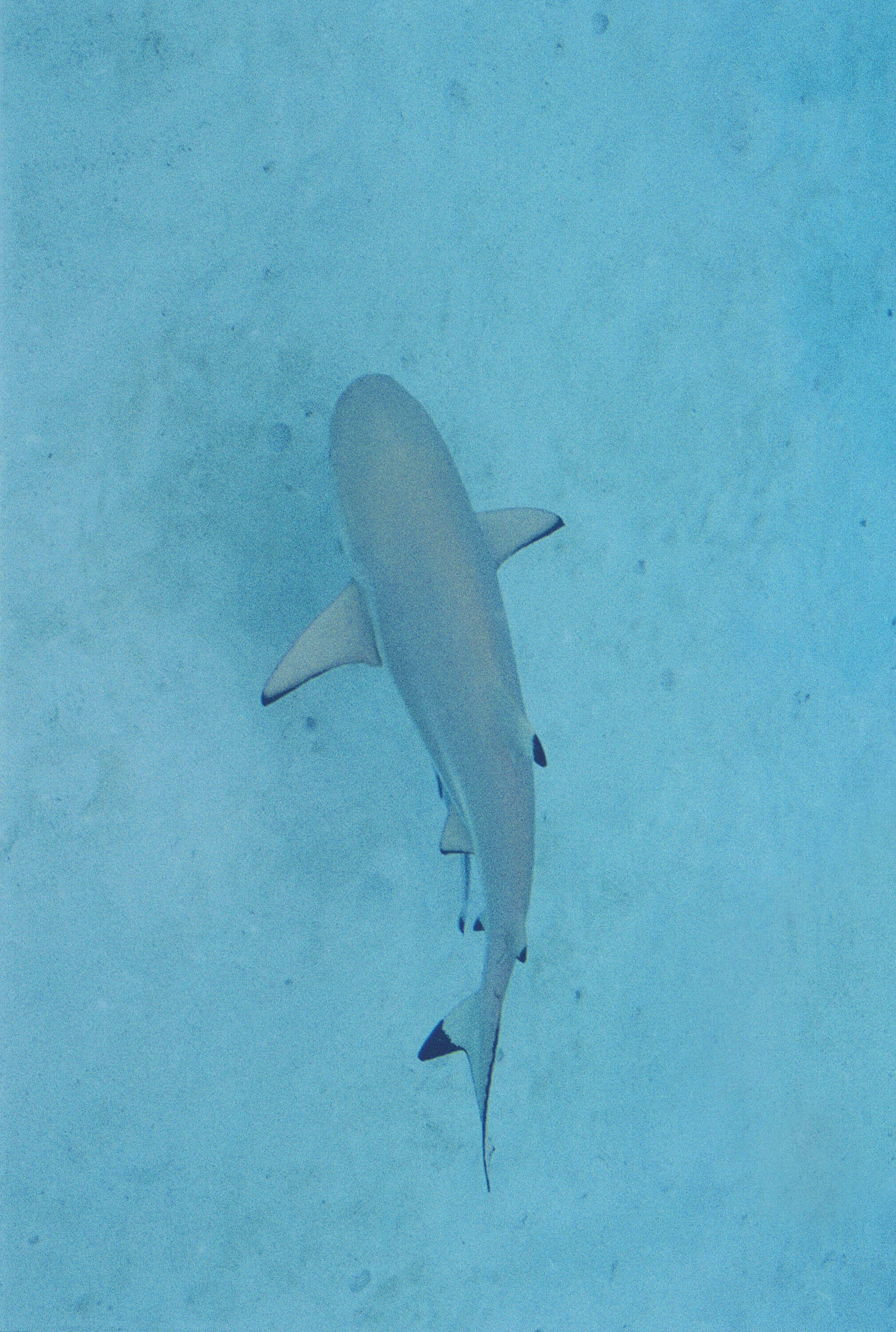Monirē (Monday).
Hervé was going to come and get us at eight in the morning. We were waiting for him in the hall of the best hotel in Papeete, with those Action Man-type doormen, young bare-footed and bare-chested men, ready to open the taxi door over their Polynesian white-and-indigo flowery sarong. I felt the embarrassment of a mother whose daughter’s T-shirt is too short at the waist, a sort of resignation towards youth. In the same way, that skimpy male skirt showed all their thigh muscles, trained to move in a disciplined yet frenzied manner to the rhythm of the local dance.
I found their choreographies somewhat basic, I was a Westerner who had lost the underlying sense of primitive man and the spontaneity of a naked body. Hervé came from Fatu Hiva, in the Marquesas islands, the most primitive island in the most primitive archipelago in French Polynesia. He’d grown up surrounded by nakedness, it was only once that he’d come to Tahiti that he adapted to that “imported” habit of hiding the body with Western-style clothes. Instead, in the Pacific it was more a question of dressing it, decorating it, drawing it. Skirts made out of plant fibres, feather breast plates, shark teeth, curved boar tusks, woven materials made from pandanus and hibiscus, shells, seeds, tattoos, leaves and flowers.
That morning was our last day in Tahiti, a Monday, and we still hadn’t managed to get into Papeeno Valley. In Tahiti Nui, if you didn’t decide to stop at some point, you’d end up going round and round the island, like on a race track: and you’d end up hating the place. There was only one road, and it ran between the sea and the mountain sides of the island, the “côté mer” and the “côté montaigne”. And all we wanted to do now was get into the mountains. Hervé seemed to be the right man. He had a small tour company, basically consisting of a white covered pick-up truck, and a telephone number, and if he didn’t answer, it meant he was in the mountains. We all understand an absolute geography which hinges around the natural things that we see around us. The rising or setting sun, quite simply. In the same way, the language used in the Tahitian villages still seemed to be based on two fundamental opposites: land/sea.
Which were never opposites in the end. We entered the crater of the extinct volcano and we felt the need to speak of the sea. Hervé wanted to tell us straight away that he was a sailor, a man of the seas. His T-shirt had a print of a Hokule’a, the traditional canoe of the Polynesian Voyaging Society that he often sailed, the Hawaiian double-hull outrigger canoe which sailed round the world for three years using the stars, the birds and the waves, bringing the message malama honua, take care of the Earth. Hervé’s second commandment was: honour your ancestors.
Taking to the sea and covering any distance, as they’d proved they could do, was one of the ways of doing just that.
Matari’i i ni’a: a novembre le Pleiadi si alzeranno di nuovo in cielo e sotto questa costellazione tornerà il periodo di abbondanza, torneranno le piogge, la natura si mostrerà opulenta, le donne e le acque della laguna e della barriera fertili. Saranno mesi di esultanza. Invece noi eravamo in pieno inverno, nel momento della siccità, della penuria e l’equilibrio fragile della natura andava protetto. Se non fosse stato per la nostra visita al marae, non avremmo strappato quelle felci fresche per farne seduta stante una corona umida di bosco.
Every summer Hervé took a group of city kids to stay without their parents in the village of Fare Hape, in the centre of Tahiti Nui. It was a very particular summer camp. They slept divided up into a handful of fare, the traditional houses built out of plants, for a week, the minimum time to send a message: you still can live in nature. The coming summer the village would be self-sufficient, it had a tidy and complete botanical garden, a marae, a spring water pool in the rocks, an equipped kitchen. And it had pink grapefruits, whose slices were as big as pieces of watermelon, which Hervé and his brother still smuggled there from the Marchesas, as if to say from an Eden where the fruit tastes different. Every child planted a tree before leaving Fare Hape. In Tahiti every mother still plants a tree when her child is born, in the place where she buries the placenta. The child and the tree grow together, see each other mature. The tree will provide fruits to eat, leaves to make a roof, and wood to build a canoe. It’s easier to grow up together. The umbilical cord goes in a bamboo cane or a shell and the father places it on the ocean seabed to protect the newborn baby.
Hervé seemed to know that he was responsible for our last day in Tahiti, and he was drilling into our heads a plethora of rituals from their lives and stories of how things had originated. Stubborn princesses who gave birth to eels, skies-oceans of water crossed by sharks and great canoes transporting souls. Everything had a meaning in the ‘reo ma’ohi language, that is, the word contained the clues to understanding the world. It was like saying that when the person who could tell you about it had died, you’d find their experience in the name of things, like that flame-red flower that announced it was time to go back to fish in teeming waters when it bloomed. Matari’i i ni’a: in November, the seven sisters would go back up into the sky and under this constellation the period of plenty would return, the rains would return, nature would come out in all its opulence, the women and waters of the lagoon and the barrier would be fertile. They would be months of exultation.
Instead, we were there in the middle of winter, in the dry season, the period of shortages when nature’s fragile balance needed to be protected. If it hadn’t been for our visit to the marae, we wouldn’t have torn those fresh ferns to make a damp woodland crown there and then.
Every visit to the marae brings and holds a gift for the divinities, a sign of the passage and thanks of an earthly guest to nature and therefore to the gods: a banana leaf placed on a stone, a shell necklace, a garland of fresh leaves, salty seawater conserved in a hollow bamboo cane.
We had left Papeete in the morning sunlight, but after the village of Papeeno, after turning where the river turns and goes back up the hill, on that pick-up we had to huddle with a woollen blanket around our shoulders. We wouldn’t have been any higher than 400 metres, so what was that cold, mountain air? It’s winter, Hervé reminded us. I think that that stinging air was a spell, a way to shut me up and make my lucid mind come together in thought. Hervé gave me the garland and told me to put it down and say a prayer.
I prayed for my grandfather, who had died exactly thirty years earlier. My memories of him were rarely reawakened, but in the marae the world of the living connects with the world of our forefathers and that forefather of mine, whom I’d known and who’d been the dearest thing that I had for a few years of my life, seemed to be there. Hervé was like an illusionist hero and he knew the alignment of that marae with the sun, which would come out from behind the mountain to warm me the instant that I sent my message up the mountain walls. In an instant, I had forgotten my life on earth and my place in it.
We left the valley before evening and we stopped at the side of the Papeeno road where a young boy was selling large round doughnuts filled with grated coconut for 150 CFP francs, about one euro. The coconut milk was like a fresh and sugary syrup, the inside was full of it. Hervé was taking us back to the hotel, he was driving fast towards Papeete, and we were busy with our buns, so big they had to be held in two hands, in the grown-up satisfaction that we and Hervé had realized we were similar. We’d got intimately close to a man and his valley, we’d finally found Tahiti Nui.
Tāpati (Sunday). That day we would meet Vaiana. After the 10 o’clock service in the temple, we got in the car to go to Teahupoo. The Taravao isthmus from Tahiti Nui, literally “Big Tahiti”, to Tahiti Iti, literally “Little Tahiti”, was like a narrow bottleneck. For us, anyone who hadn’t been along that strip of land or who hadn’t come out there, hadn’t seen anything. Before the isthmus there was Vaiana and after Tahiti Iti.
He, Vaiana, worked as a waitress in the Baie de Phaëton, a bizarre bay, a harbour with serene blue waters, small sail boats, and European or North American trees. It was almost an Alpine bay, more suited to memories of Alaska than the South Seas. From the bay, you could go in two directions, the asphalted road north went to the village of Tautira, the asphalted road south went to the taxi boat and surfers’ beach of Teahupoo. Both were our idea of Tahiti and here we understood why many of the inhabitants of the peninsula, the Presqu’île, hadn’t been to Papeete for years, or only went to get bureaucratic things sorted. Seventy kilometres from the capital, an hour and a half by car wherever you were heading, and yet there couldn’t be a place with a more different character to Tahiti Nui.
We stopped the car on the roadside and got out to walk, each of us separately. We spent a silent and undefined amount of time walking by a forest of mape trees, the large Tahiti chestnuts, with their big roots as flat as oars, and alongside a large marsh of lily pads and palms and bananas, past the irrigated lands and the taro plantations with their man-size leaves, the fields with more precious plants, yams or sweet potatoes. From time to time we’d find a house with a dog, a cockerel, a canoe, a pick-up, a plume of smoke: the family unit of these oceanic lands. Some said that the mist from the smoke rising from the burnt stubble kept away the mosquitos, others that those domestic braziers were the easiest way to keep the gardens tidy; everyone said that fire was a sign of life, of a house that was lived in.
“Plant my head, and a tree will grow from it whose fruits will remind you of me” [2]. We’ll always remember Vaiana, the sweet waitress who lives in Tahiti Iti.
In numerous islands of the Pacific there are people who are neither men nor women, half man, half woman. In French Polynesia, mahu are women who live in male bodies. Common figures, nothing could be less exotic or out of the ordinary: everyone has a mahu in their family. They take care of the family’s children, make clothes and the best ornaments for ceremonies, they devote themselves to singing, they’re often employed in the hospitality industry. A “third sex” exists that shakes up the certainty of the binary way of thinking that divides the world into two genders, male and female.
Alongside the image-spectre of femininity assigned to Polynesian women, the “classic” vahine, and the tangible ideal of muscular male power, there exists the figure of the mahu, a singular cultural feature whose modern existence is based on age-old historical and social roots. Their important social role is recognized both in the organization of the family and in the division of community responsibilities.
In Tahiti there was nothing odd about those “sweet men” who lived surrounded by extreme love and respect.



